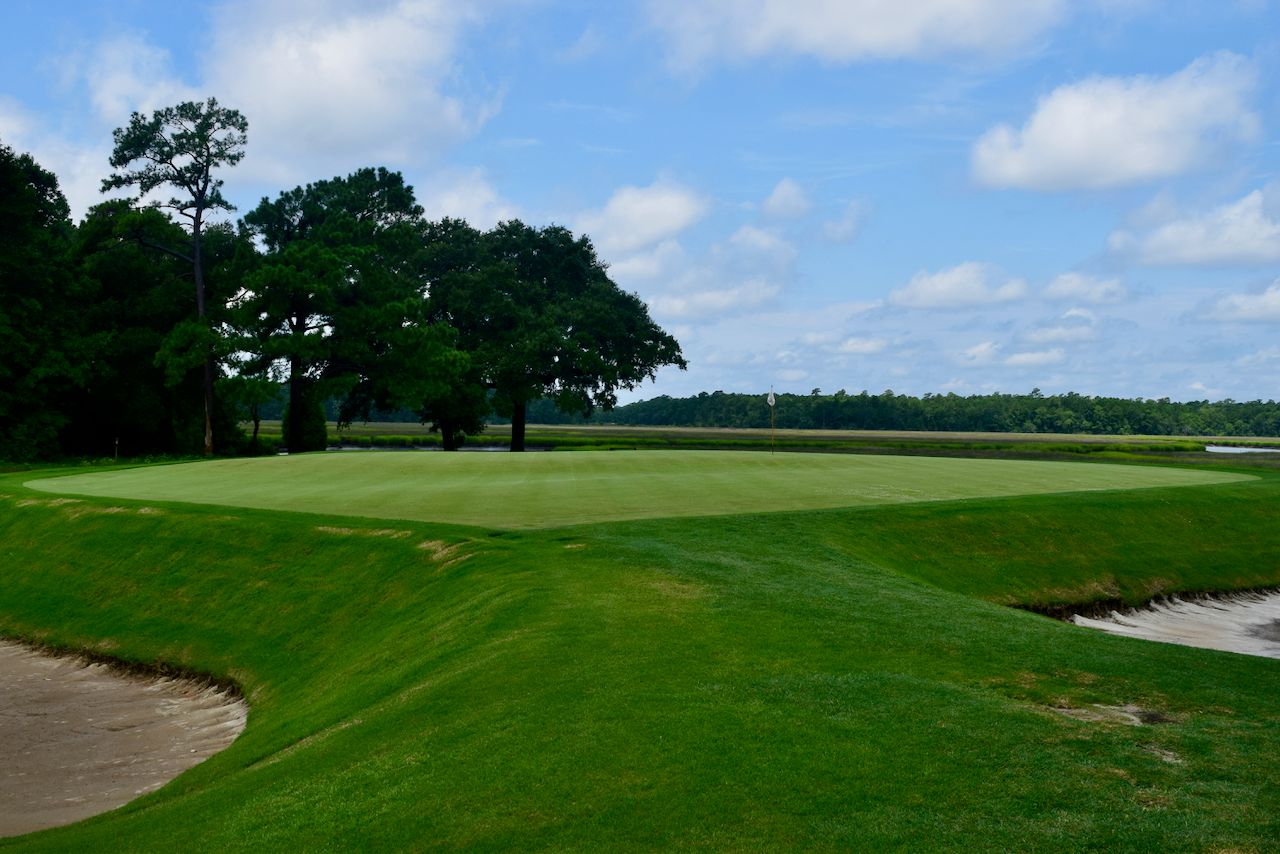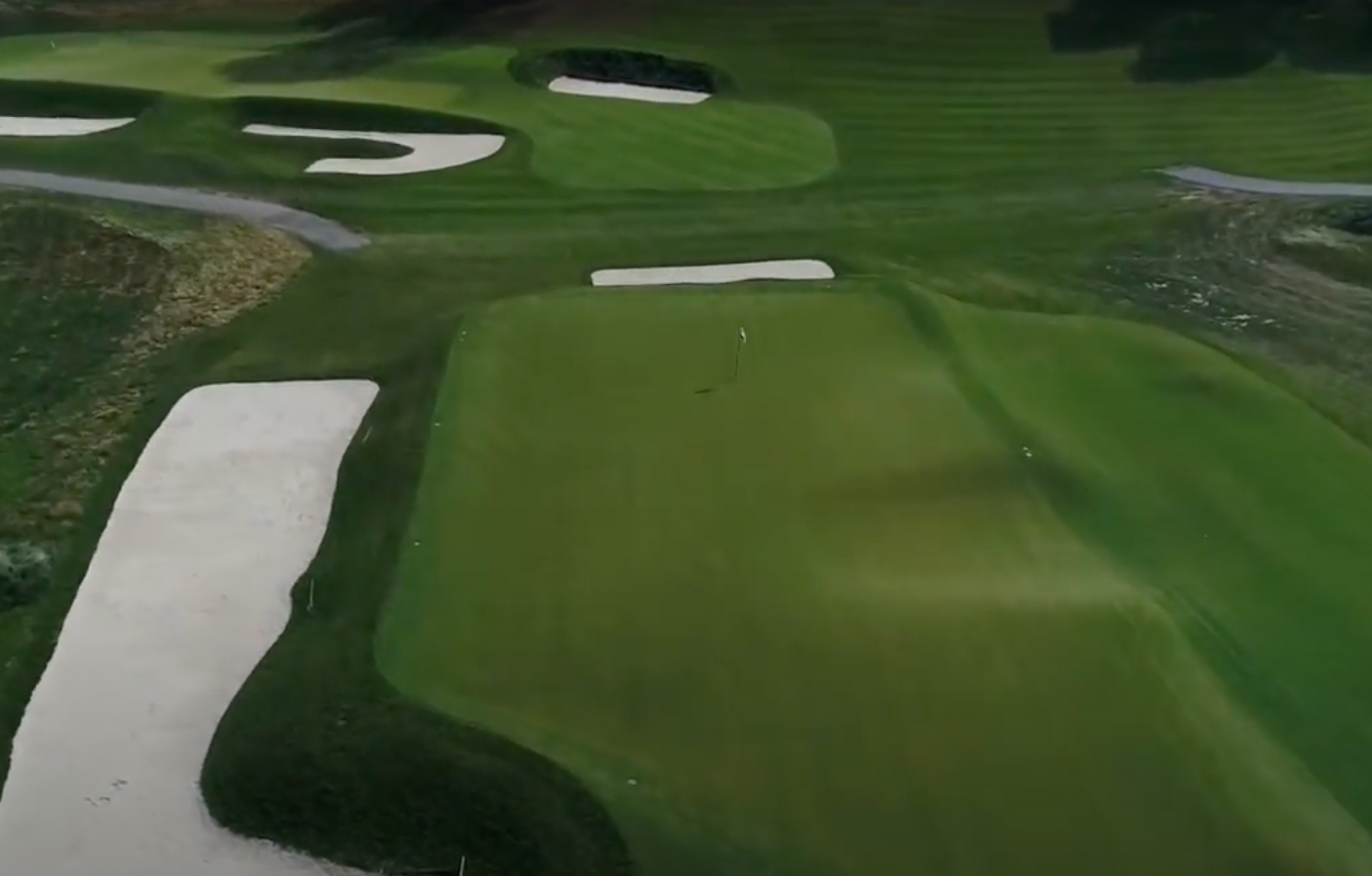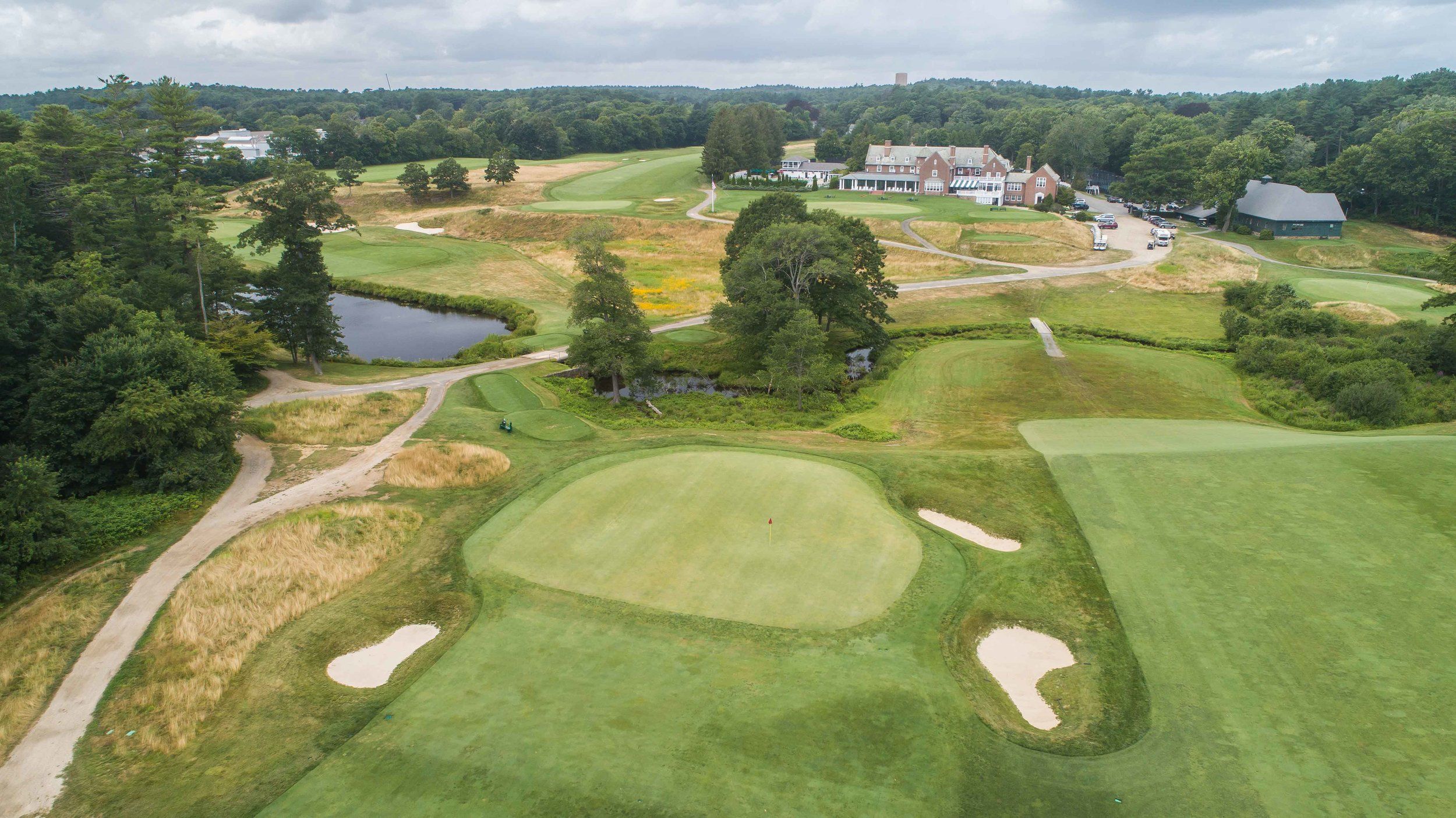The message of great, strategic golf course architecture is clear. The actual words used to describe those golf courses, however, are many. The Architecture Glossary column will examine more precise terms and concepts that one will find when exploring golf course architecture. Hopefully understanding these terms, and why certain architects employed them, will help you to better understand the golf courses you play…and maybe even improve your scores!
Today’s term is ‘Bathtub’.
The term “bathtub” has been used in the context of putting greens for almost as long as golf course architecture has been discussed. “Putting in a bathtub” is one of thousands of hyperboles to describe green speeds at modern clubs. More notably, the No. 14 green at Cruden Bay has long been known as the “Bathtub,” describing its elongated punchbowl nature.
Neither of these, however, are the particular interpretation of “bathtub” that we’re going to look at today. This “bathtub” is perhaps best understood in comparison to the “thumbprint,” a similar putting hazard.
Consider No. 16 at No. 16 at C.B. Macdonald and Seth Raynor’s Sleepy Hollow Golf Club, one of the most photographed short holes in golf. It’s a literal “Short,” the template that emphasizes accuracy for the tee shot on this small-distance hole. Although the green is large, the MacRaynor duo punctuated the green with one or more severe contours to challenge those who find the wrong part of the putting surface. Very often, these contours took the form of a “thumbprint,” or a circular valley plopped right in the middle of the dancefloor. The inspiration for this title is obvious.
However, there were a number of short holes where the “thumbprint” looked much more like an actual finger and, accordingly, deserve a different identifier. A term already in use at clubs like Yeamans Hall is “bathtub.” No. 3 is another example of the Short template, however the central putting hazard is more of a thin trench than a full valley.

Many of Seth Raynor's "Short" template holes feature "thumbprint" bowls at their center. The version at Yeamans Hall features a more distinctive, bathtub-shaped trench at the center. (Photo Credit: Ryan Book)
It would be easy to suggest that the dividing valley on the MacRaynor template “Biarritz” is also a “bathtub,” however true bathtub putting hazards resemble…well…bathtubs, while the Biarritz ditch is a tad too long to qualify.
This is not to say that the “bathtub” is surrounded by slope on all sides. Just like Raynor’s thumbprints, which often feature subtle escape routes for the sake of drainage relief, bathtub features are often incorporated at the edge of a green, serving as a painful challenge for misplaced approach shots during dry times, and helping to bring water off the green during wetter periods. Many greens feature runoff areas, of course, but most are designed to appear as natural as possible. An architect creating a true bathtub doesn’t fear making his hand obvious.
One example occurs during No. 11 at Meadowbrook Country Club, a Willie Park Jr. original that was dramatically reimagined by Andy Staples during 2017. This one-shot hole measures 215 yards from the back tee. A series of bunkers threaten to the left, but those who decide to go right must play an even more measured shot. A ball that lands at the front of the green could roll down into a steep swale at the right and off the putting surface. Those who manage to stop their ball short of the bathtub face a decision whether to try putting right at the pin, through the swale (an exercise best left for physicists) or try to secure par via a tricky two-putt around the hazard.

Andy Staples aimed to recreate the manufactured trenches of Huntercombe at his Meadowbrook renovation, which includes the bathtub hazard at No. 11's green. (Photo Credit: Jupiter Aerials)
The artificial aesthetic of this putting hazard, and many of Meadowbrook’s other extreme greens, were inspired by what is likely Park’s most experimental design. Staples visited Huntercombe Golf Club outside of London to probe Park’s legacy. The course is notorious for a large number of sandless pits, clearly man-made, that serve as hazards around the property. Some of these are quite thin and traverse fairways, deterring shots that rely too strongly on the ground game. That DNA is on display quite nicely at Meadowbrook.
That’s not to say that all bathtub putting hazards are man-made, of course. The story behind the trench at Essex County Club’s No. 3 hole is intriguingly natural.
Essex is famously a Donald Ross design, but there was a course on the property prior to the Scot’s arrival. Almost everything from the prior design has disappeared, except for the No. 3 green. Ross may have taken a liking to an incidental feature that occurred as a result of the amateurish construction of the previous course. It’s no secret trees are inevitably removed to create parkland courses…but in most cases the root systems of the tree are removed as well. Why? Because as these parts of the tree rot, they alter the shaping of the soil above them.

P.J. Koenig's aerial at Essex County Club shows the clear indentation where decaying tree roots created the hole's signature "bathtub" hazard. (Photo Credit: P.J. Koenig)
This green is a rare instance where that alteration resulted in a stronger product. The collapsed hollow where the roots once lay is now an infamous internal contour named, of course, “the bathtub.” Ross may not have created the hazard, but he brilliantly incorporated it as part of the long par five’s strategy. Players may avoid the large bunkers that line the entire right side of the hole, but an approach from the left means reckoning with the tub, ready and able to collect or deflect ground shots.
Finding clear examples of a “bathtub” isn’t necessarily easy; much of the reason why is because the more circular “thumbprint” catch areas are easier to incorporate naturally into a green. The “bathtub” pit has a tendency to look more produced (which doesn’t deter a purposeful architect). The other reason may be that the term simply isn’t widely recognized. Arguable examples exist across great golf courses.

Winged Foot West is one of the most notorious putting challenges in the world. That challenge begins early, as No. 1 features a bathtub hazard on its second tier. (Photo Credit: USGA)
One potential case is the first green at Winged Foot West, a championship course both renowned and feared by putters. The opening surface has a fairly level front portion, and a second tier that’s divided down the middle by what, for all intents and purposes, is a bathtub. End up on the opposite side of this collection area, and a two-putt is hardly assured. (Granted, better to be putting down into the bathtub than downhill to the front portion of the green).
Such is the case in most instances of this putting hazard, however. Trying to navigate across a “bathtub” can be a cold shower for you and your round.
